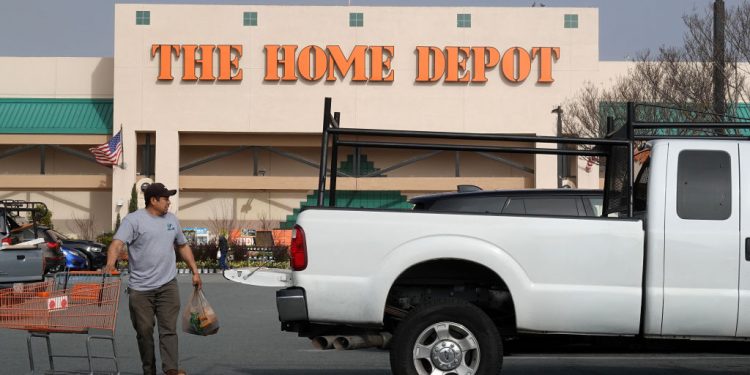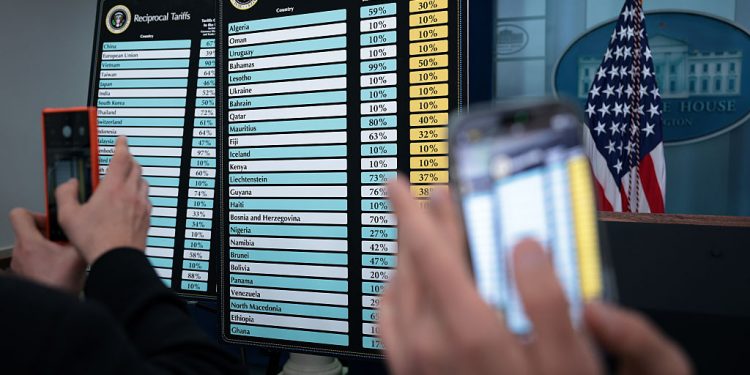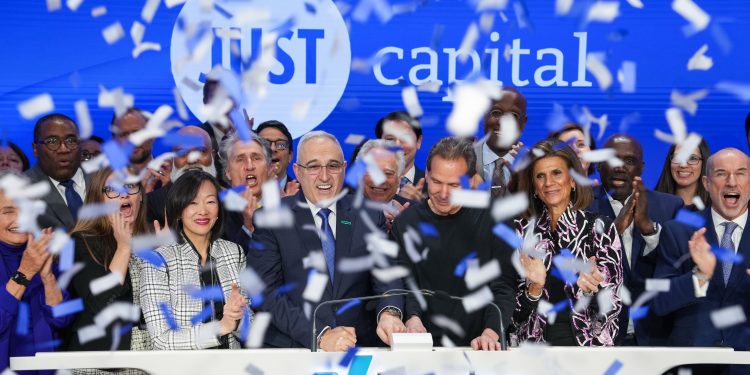Companies Must Step Up to Protect Their Contract Workers for the Remainder of the COVID-19 Crisis and Beyond
Nearly 10 months into the COVID-19 crisis in America, workers across the country continue to face unthinkable hardships. More than 26 million workers are unemployed, out of the labor force, or have reduced hours and pay as a result of the pandemic. Over 25 million people report that their household is food insecure and more than half of all adults identify having difficulty paying for household expenses. Workers who have remained on the job or recently returned face unimaginable health risks, often with little to no hazard pay.
At the same time, as we know from our COVID-19 Corporate Response Tracker, a number of companies have stepped up to help provide much needed support to their workers. From expanding paid sick leave plans and providing free PPE to establishing backup dependent care programs and hazard pay, some – though not nearly enough – of America’s largest companies have prioritized doing right by their workers. However, even fewer companies have taken steps to protect one particularly vulnerable segment of the workforce – temporary, vendor, and contract (TVC) workers.
Over the last three or more decades, businesses have increasingly relied upon the use of TVC workers to support the development of their products and services. Despite ensuring the successful day-to-day operations of offices and contributing to the core development of products, these workers have largely been left behind by companies, often being paid less and having access to fewer benefits. The COVID-19 crisis has exacerbated the precarious nature of these jobs, leaving many workers with little support when they needed it most. We explore a short overview of this often overlooked segment of the labor force below, and explore what steps companies in the Russell 1000 have taken to support this population, highlighting companies that are leading the way.
The Temporary, Vendor, and Contract Workforce
With the advent of the gig economy, the nature of contract work has gained increased attention from the media, policy makers, and the public. While workers at many of these companies are largely misclassified as independent contractors and the public is understandably questioning the nature of their employment, they are not representative of the broader temporary, vendor, and contract workforce. So, who are these workers?
TVC workers are individuals who contribute (directly or indirectly) to the development of a company’s products or services but are not the direct employees of that firm. For example: a company may contract with an agency to fill temporary fluctuations in workforce needs (e.g. during the holiday or summer season); a company may contract with a vendor to perform a specific service for the company either on-site (e.g. janitorial services) or off-site (e.g. payroll); and finally, a company may contract (directly or indirectly) with workers to meet specific business needs either on- or off-site (e.g. graphic designer). Collectively, this group of workers is referred to as the temporary, vendor, and contract (TVC) workforce.
Over the last few decades, companies have increasingly relied upon these forms of employment relationships. Dr. David Weil describes the phenomenon as the fissuring of the workplace. The days of co-workers under the same roof being employed by the same company seem to be behind us. Consider the last time you visited someone’s office. The security guard you passed on the way to the elevator, the receptionist at the front desk, the cleaning staff, and cafeteria workers are all likely employed by different entities despite all providing services and supporting the same parent company you visited.
Companies have traditionally argued that by focusing on their core competencies they could improve business outcomes. That is, by not having to directly manage janitorial staff, a technology company could better focus on developing new software, for example. Increasingly, though, companies have used TVC workers to fill roles that strike at the core competencies of the business. In short, companies are filling jobs up and down the wage and skill ladder with TVC workers rather than directly hiring employees.
A growing body of research has found that TVC employment relationships can have a significant negative impact on outcomes for workers. For example, one study that examined the rise in the use of contract workers in janitorial and security services found that there was as much as a 7% and 24% wage penalty for contract workers in these occupations, respectively. Similarly, news reports about contract workers at large technology firms, like Google, have highlighted significant disparities in pay and benefits, including paid time off, between similarly situated employees and contract workers.
Corporate Response to COVID-19
Since COVID-19 hit the United States, JUST Capital has been tracking what companies have done to support their workers, customers, and communities. In the early weeks and months of the pandemic a number of companies announced new policies and benefits to support their employees and particularly frontline workers.
For example, when many businesses temporarily shut down, 52 companies (or nearly 6% of all Russell 1000 companies) announced that they would temporarily continue to pay their employees when the pandemic first began. After the CDC recommended a 14 day quarantine period for anyone who may have contracted COVID-19, 21% of companies announced new or expanded paid sick leave policies. And as schools and daycare centers shut down, 9% of companies offered new or expanded backup dependent care benefits.
While JUST Capital and others have celebrated companies for doing right by their workers during COVID-19, the complex nature of TVC employment relationships means that many of these workers have fallen through the cracks. Specifically, the scope of new corporate policies during the pandemic have almost exclusively covered employees, not TVC workers.
Across a number of issues, JUST Capital has found that only a handful of companies took specific steps to protect the TVC workers who support their businesses.
- Compensation: Among all Russell 1000 companies, only 31 announced that they would continue to pay contract workers during store and office closures. Microsoft, for example, announced that it would continue to pay all vendor hourly service providers, including shuttle drivers and cafe workers, regardless of whether their full services were needed. For example, this commitment ensured that 4,500 workers of vendors that support Microsoft in Puget Sound would continue to receive their full pay. To date, JUST Capital has not seen any public announcement of a company extending hazard pay to TVC workers who are also on the frontlines during this pandemic, such as security guards in retail stores.
- Health and Safety: More than 60% of America’s largest public companies have announced new health and safety measures this year, with 25 percent providing free PPE to their employees. However, JUST has only tracked a handful of companies that explicitly extended these protections to on-site contract workers or developed policies to meet the specific needs of those workers. Target, for example, started providing Shipt workers who fill and deliver customers’ orders with face masks and gloves.
- Benefits: As discussed above, a number of companies expanded paid sick leave and other benefits this year. However, beyond Microsoft, which already required vendors to provide employees with paid sick and parental leave, JUST Capital has not tracked a single instance of a company ensuring their TVC workers have access to crucial benefits, like paid sick leave or even health insurance, during the pandemic.
The COVID-19 crisis has underscored the precarious nature of the TVC workforce and the consequences of seemingly arbitrary division between policies for employees and TVC workers. In short, the lack of corporate action to protect TVC workers during the COVID-19 crisis is a function of a long-run trend in corporate America: increasingly companies have relied upon TVC workers to support their businesses but for legal or other reasons failed to take responsibility for the economic outcomes of these workers. But it need not be this way.
JUST Capital’s polling shows that only 25% of people think the current form of capitalism is working for society. Importantly, 89% of Americans think this is a moment for large companies to “hit reset” and change how they are treating their stakeholders. As more companies begin answering the public’s call for change and focus on improving outcomes for their workers, they should take a close look at their contracting practices too and ask whether the treatment and outcomes of these workers align with their mission and values.
Looking Ahead
Over the next several months, Americans are expected to have access to a COVID-19 vaccine. For the first time, the end of the pandemic seems like it is within our reach. However, even after vaccines are distributed, workers and businesses across the country will continue to struggle to recover from the economic hardships of 2020. Temporary, vendor, and contract workers are no exception. In fact, as businesses reopen and rehire workers, some experts predict an increase in the prevalence of TVC employment relationships. This means that many workers may return to jobs that are less secure than those they held prior to the COVID-19 crisis. At the same time, though, we are seeing meaningful steps taken by some businesses to raise wages for low-wage and historically marginalized employees. The trajectory of the experience of employees and TVC workers should not continue to diverge.
As more companies embrace stakeholder capitalism and strive to create greater value for their workers – they should consider what they are doing for all of their workers, including the temporary, vendor, and contract workers who ensure the success of their operations and products.






